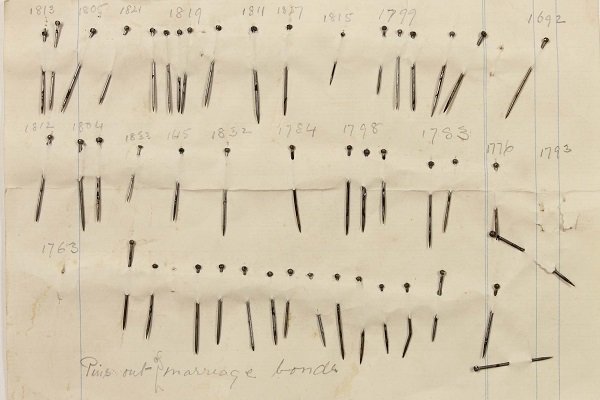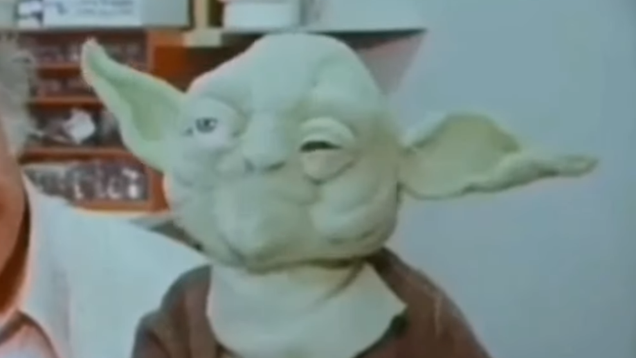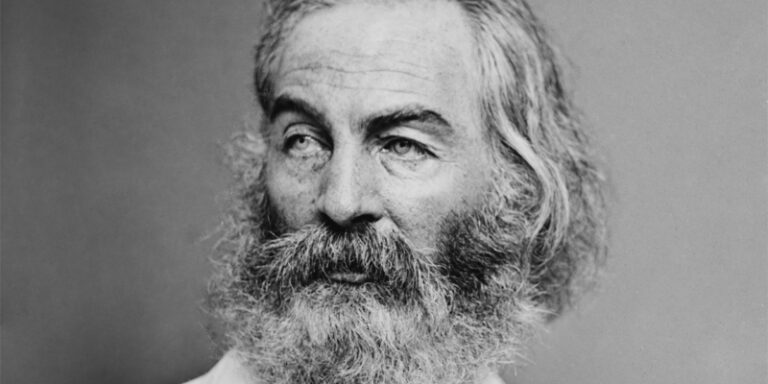
It’s time to see how Season 3 stacks up to Seasons 1 and 2. How the Darmine Doggy Door stacks up to Calico Cut Pants. How 55 pastas stack up against total tuna cans.
With the third season of I Think You Should Leave now streaming on Netflix, we asked our staff to sit down, have a sloppy steak, and update our ranking of the show, evaluating every sketch with the same intensity with which they would play the Egg Game. It wasn’t easy to do—nearly every sketch in the series deserves praise and has an argument for being the best—but after much deliberation, here is our updated ranking of every sketch in I Think You Should Leave.
79. “Dad Video” (Season 3, Episode 1)
There’s something about a sketch that frontloads the “what-the-fuck”-ery of it all. A father (Fred Armisen) gathers his two sons to watch a video; we find out that they have been acting up and, in a last-ditch effort to straighten his sons out, their father throws on a VHS tape to teach them a lesson. But the tape is a crudely-produced video starring the father, in which he responds to a rude kid on the street by beating him to a pulp on an oddly quiet street. Soon we find out that this idiot father blew $15,000 to try and scare his kids into … not dancing in the kitchen when all of his stuff is on the marble island? Ironic, since it’s the father’s constant blowups about the production values of his trash video that might be why his sons are acting out. I also want to point out that the father and his sons really should’ve bonded over discussing his wack fight video; talk about missed opportunities. —khal
78. “Don Bondarley” (Season 3, Episode 6)
I’ve attended a bachelor party that included a private magic show (shout-out to Jimmy Fingers) and let me tell you, “Don Bondarley” captures the uneasy dynamic of an intimate show by a performer who, perhaps, time has passed by (not you, though, Jimmy Fingers). Alberto Isaac turns in a great performance as the king of dirty songs (incredible falsetto on the last syllables of “Oh, old Bart Dogfuck had a dong a mile long, a dong a mile long had heeeeee”), but this sketch doesn’t have time to descend fully into madness and doesn’t have the bizarre propulsive energy that makes some of ITYSL’s shorter skits resonate. “Don Bondarley” has its moments—and adds to the show’s rich musical canon—but in retrospect, they probably should have just gone to Corset. —Isaac Levy-Rubinett
77. “Ponytail” (Season 3, Episode 2)
Will Forte is only in two episodes of ITYSL. In Season 1, he was the man screaming from the back of the plane in a failed attempt to enact revenge on the baby (now an adult) that kept him from saying anything funny to the guards at Buckingham Palace; in Season 3, he’s the ponytailed man screaming from underneath a car at two women and their ponytailed neighbor. Forte screaming is simply great TV. His delivery of the “it’s not that gross” line in his Season 1 appearance is among the best in the show, as is his “put his hand in dog shit” jab at the neighbor in Season 3.
The rules are simple. Don’t park over the sidewalk. The latter isn’t the minor inconvenience you think it is, either. If you break the rules, men with ponytails that go down just past their butthole will get stuck under your car. You can’t cut them out with scissors (they’re not going to be worse off!), and you won’t be able to cover for them showing up late to their reservation with a Google image search for “disgusting diarrhea in bowl.” The maître d’ has already seen it. —Austin Gayle
76. “Fenton’s Stables and Horse Farm” (Season 1, Episode 6)
A trademark of most Tim Robinson sketches is that where they start and where they end up often have nothing to do with each other. Plotlines morph into unrecognizable tangents, the smallest details are latched onto and beaten into the ground until the dotted line from setup to punch line becomes a twisted thread of confusion and hilarity. But that’s, uh, not the case with this one. It’s just a 90-second sketch about horse dicks. —Cory McConnell
75. “Del Frisco’s Double Eagle” (Season 2, Episode 5)
Credit card roulette is an objectively terrible game. It’s an automatic night ruiner. The credit card gods can always sense the most vulnerable bank account, and in this case, Leslie is smote with a 10-person tab at a fancy restaurant. Like Pavlov’s dog, upon hearing his name, Leslie immediately replies with an all-time hissy fit: “I’m not paying the bill. That’s fucking crazy. It’s too much money. Maybe if I got a bite of everyone’s meal, but I just don’t want to do it.” Hal, the friend who proposed the game, attempts to diffuse the situation by saying he’ll pay the check, but Leslie is just getting started. “FUCK! I SHOULD HAVE LIED! I should have said there was some reason I couldn’t pay and not just said right away I’m not gonna.” Yes, Leslie. You should have lied. —Matt Dollinger
74. “Dave Suit” (Season 2, Episode 6)
As far as ITYSL sketches revolving around bathroom humor go, “Dave Suit” is probably the weakest. It just doesn’t have the specificity and knotty plotting of “The Gift Receipt” or the surrealism of “Calico Cut Pants.” What it does have is Tim Robinson being scolded by his boss for hiring a guy who looks like his coworker to take huge dumps he could then blame on said coworker—a gag that, with all due respect, worked “150 times.” It also has Robinson arguing that Jerry from Tom & Jerry probably sniffed women’s panties (“You weren’t with him 24/7 in the cartoon!”) and interrupting his own scolding to complain about how a guy who lives too far away wants to buy his bike stand. It’s not a peak sketch; it’s still pretty great. —Andrew Gruttadaro
73. “Little Buff Boys” (Season 2, Episodes 1 and 5)
“Little Buff Boys” is Season 2’s spiritual sequel to Season 1’s “Baby of the Year.” For that reason, it lacks some of the original’s absurd shock, but it’s still ridiculous and quotable. Instead of Sam Richardson making three judges pick a perfect baby, he’s making one office manager select who he thinks is the buffest little boy (they’re not actually that ripped—Richardson has just put the boys in “goose suits”). Obviously, the boss has some qualms about evaluating minors in front of all his employees, and the thing falls apart in quick order. No matter, Richardson hosting failed competitions is a clearly rich vein for ITYSL. There must be a third one coming, though the winner will never be Troll Boy. —Richie Bozek
72. “Robert’s Christmas Birthday” (Season 3, Episode 3)
While I can’t argue with “Robert’s Christmas Birthday” landing near the very bottom of this list, I also think there are plenty of small details about it that underline what a deeply weird, deeply specific, deeply brilliant show I Think You Should Leave is. In this short tale about a disgruntled employee who keeps defacing a cardboard cutout of her boss at his birthday party, ITYSL standout Patti Harrison gets to dump countless shots on cardboard Robert’s face, and furiously spray Windex into a cup—that she then immediately dumps on cardboard Robert’s face, to the increasing concern of human Robert. Then the exposition drops: Harrison’s Candy is exacting revenge on Robert because last week he told her she couldn’t bring her rats to work, even though he let Steven bring his dog to work. This opens the door for Harrison to make a face that says “finally you’re starting to make sense” when Robert admits that it’s not up to him to decide which animals are worse—and to deliver lines like, “Dogs are to Steven what rats are to me” and “I take the food, put it on the desk. I knock it in, no one knows I have rats.” Isn’t I Think You Should Leave a treasure? And don’t you think Patti Harrison should’ve been in more sketches in Season 3? —Gruttadaro
71. “Mortal Enemies” (Season 3, Episode 1)
Once in a while on I Think You Should Leave, there are two people who should leave. The first offender of “Mortal Enemies” is Stan (played by Tim Robinson), who takes a hypothetical suggestion during a work seminar that his coworker Rick is his mortal enemy to the absolute extreme—by which I mean he resorts to fake-dumping water on him. But there’s an even worse offender here: Alex, who actually dumps water on Stan. “I got too hyper,” a dejected, reflective Alex correctly deduces, while a soaking wet Stan parachutes in with newfound self-righteousness (and loose hair plugs). Let’s be honest: This isn’t a very strong sketch, and there are maybe a dozen better office-based sketches on this show. But it is quite funny that it makes a singeing noise when Alex’s water touches Stan’s skin. —Gruttadaro
70. “Lifetime Achievement” (Season 1, Episode 4)
An awards ceremony honoring the great Herbie Hancock—the epitome of cool—goes horribly wrong when Tim Robinson’s character, an awkward bespectacled presenter, trips on the stairs, falls off the stage, and proceeds to be furiously mauled by a service dog. Or so he claimed. “I don’t think the dog that bit me should be put down,” he says as he opens his speech honoring Hancock’s body of work. But according to the owner of said dog, literally every audience member in attendance, and the Watermelon Man himself, the dog didn’t bite Robinson—it humped his head. Robinson is in full denial, but there’s video evidence that’s soon linked to the overhead monitor. “You don’t tape people,” Robinson begs. But with the ceremony completely off the rails and #HumpGate in full swing, Robinson’s character lobs one last attempt at getting things back on track with an all-time classic: “That’s why I love Herbie Hancock, he loves to lie.” —Dollinger
69. “New Joe” (Season 1, Episode 3)
New Joe (Fred Willard) is the replacement organist at a funeral service, and he brings his own American Footplayer–esque instrument to the proceedings. To honor the departed, he plays a little ditty that absolutely slaps but is a bit tonally off. Things get even more awkward (and hilarious) when he starts breaking dishes with glee. You’d think a funeral would be one of the easier rooms to read, but New Joe cannot read rooms. (“My condolences,” he keeps saying.) It’s that absurdity that makes “New Joe” a great addition to I Think You Should Leave. —Levy-Rubinett
68. “Christmas Carol” (Season 1, Episode 4)
In this two-minute mash-up of A Christmas Carol and The Terminator (sure, why not?), Baby of the Year/Little Buff Boys host Sam Richardson stars as the Ghost of Christmas Way Future, a power-armor-wearing warrior from the year 3050 who Kool-Aid Mans through Ebenezer Scrooge’s wall to warn him about the dangers of Skeletrex and his Bone Brigade. The time-traveling Ghost doesn’t divulge how the Bonies came to life—is this the origin story for “The Bones Are Their Money”?—but the brief skit is worth it to hear Richardson rant, “He’s 15 feet tall and he has bones the size of tree trunks!,” “Use your Christmas cheer and bash its frickin’ brains out, ya idiot!,” and “Crap dang it, this sucks!” This isn’t Richardson’s best role in the series, but it gives me an excuse to say that if you haven’t watched real-life besties Richardson and Robinson (and other familiar faces from ITYSL) in the dearly departed Detroiters, you should do so immediately. —Ben Lindbergh
67. “Joanie’s Birthday” (Season 2, Episode 5)
Nothing resonates with millennials like a Johnny Carson impersonator. Unfortunately for the attendees of this house party that Carson was hired for—“at a low, low price point”—he can hit. As in, he’s contractually allowed to assault the party’s patrons. “Oh my god, Johnny Carson just fucking hit me,” cries out one partygoer. Tim Robinson’s character, the impersonator’s wrangler, comes breathlessly barging in: “HE CAN! HE CAN! HE CAN!” Little do the people know, hitting is, of course, allowed at this price point, allowing Carson to tee off on unsuspecting attendees like he’s taking his famous monologue swing. “Wild, wild stuff.” —Dollinger
66. “Supermarket Swap” (Season 3, Episode 2)
A sketch that eerily came out the same week that Apple unveiled its new Vision Pro headset, “Supermarket Swap” is a Supermarket Sweep parody in which contestants have to grab items from a virtual grocery store. (The game is hosted by The Bear’s breakout star Ayo Edebiri.) Everything starts off harmlessly enough, but when Robinson’s character wins a round and gets to put on the VR headset, he has an existential crisis—and forgets how to breathe:
/cdn.vox-cdn.com/uploads/chorus_asset/file/24744371/unnamed__26_.png)
While it’s tempting to inject greater meaning into the sketch—an absurdist cautionary tale about how the immersive nature of AI can never fully replicate the human experience—“Supermarket Swap” is mostly a testament to Robinson’s gifts as a physical performer. To watch this man violently flail and convulse his body in a futuristic dental chair is like seeing Roger Federer at Wimbledon: art of the highest order. —Miles Surrey
65. “Mars Restaurant” (Season 2, Episode 5)
Comedy is specificity, and specificity is Tim Heidecker with shoulder-length hair in a deep V-neck giving an increasingly personal and detailed account of his date’s mother drinking vomit, repeatedly, on the Davy and Rascal Show just to buy school supplies for her children, all because a fake alien comic at a novelty space café zeroed in on the wrong table at the wrong time. That it’s shot as if Heidecker’s Gary is having an honest-to-god conversation with an animatronic alien head is a freaking gift. But what unfolds from there is a story of justice. This is the comeuppance that all roast comics deserve: to be dragged out into the light and made to answer for themselves, and then be conned out of another Mars Cocktail™ just because. —Rob Mahoney
64. “Banana Breath” (Season 3, Episode 6)
Just a few things worth noting here:
- Not all heroes wear capes. Cam (Alison Martin) recognized her coworkers suffering in the doldrums of a run-of-the-mill HR training session and broke the torment with comedy gold: “Back away, banana breath. What the hell did you just eat? A banana?” Utter brilliance.
- Then, in an all-time heat check, she quickly pulls up Tees Today™ on her phone, offers shirts to both Mary and Meredith, and ropes Rick into the design process because she sees him for the artist he truly is. What did we do to deserve her?
- You think Barney deserves credit for the project while he was out chowing down bananas at lunch? Come on, banana breath. Get a grip.
- Cam laughed to herself for 27 seconds (I timed it) before the presenter asked if she needed to leave the room.
- Mary is a piece of shit. Everyone wears t-shirts. Just get it big and use it as a night shirt. Imagine lounging around in a big t-shirt and undies. Like it or not, Cam’s putting you down for one, bitch.
- Rick fumbled the bag. He spends all day drawing at his desk and can’t doodle up a computer? It’s just a box with keys! —Gayle
63. “Friend’s Weekend” (Season 2, Episode 4)
There are tiny moments that save this sketch, in which Robinson’s character tries to lighten the mood of a party by doing a Blues Brothers routine, only to make things way worse by freaking out a family dog: Conner O’Malley playing the world’s most aggrieved husband; the banal discussion about why the dog is losing its shit, which ends with O’Malley yelling, “What?! We know what the problem is”; and a second dog coming out of nowhere and nearly running through a glass door. And finally, there’s Robinson’s performance after the routine has clearly bombed: tears smeared on his face, the whole house staring at him, he simply says, “This really is quite a beautiful house.” Annnnnd scene. —Gruttadaro
62. “Jenna’s Bad Day” (Season 3, Episode 4)
Everyone farts. He squoze when he threw his hands down, and he farted. It’s OK. You’re OK. What isn’t OK is fighting the 200 friends you paid for in the pool and splashing water in their mouths. You’re going to have to pay more for that.
Tim Robinson is farting and screaming in an oversized suit as the ringleader of a pay-to-play friend group. It’s perfect. He steals the scene away from former SNL cast member Beck Bennett, making his ITYSL debut as Stuart. But that doesn’t mean I want to be either of those guys. I want to be Mike ’cause he has the best friend group. His friend group has a smooth rhythm, all orchestrated by Mike. —Gayle
61. “Tasty Time Vids” (Season 3, Episode 6)
If only this sketch was a “So you wanna be a content creator?” PSA. It really speaks to many ills of that ecosystem, from the cesspool that comment sections have become, to the glut of bad videos out there, to the prison that is having to create content consistently. The why of Draven’s confusing (and awful) “Frankenstein’s Chick” video series aside, I kind of blame David (and not just because he handed someone his phone to place a lunch order). David was way too quick to big up Draven. Either figure out how to dole out constructive criticism or say you lost your phone in a tornado or something. Positive reinforcement of internet garbage is why this particular brand of short-form content is clogging up every app with the ability to host videos. The Davids of the world need to chill so the Dravens of the world can, I don’t know, throw their phones in a river or actually lose them in a tornado. Whatever keeps Draven off the timeline. —khal
60. “Metal Motto Search” (Season 3, Episode 6)
Danny Green’s Photo Wall of Metal: Metal Motto Search is, like its title, a simple game. Its rules just take a really long time to explain, and there’s so much lore surrounding it that contestants have to watch a cartoon about “what’s happening in Metaloid Maniac’s world.”
/cdn.vox-cdn.com/uploads/chorus_asset/file/24744819/Screenshot_2023_06_21_at_3.19.22_PM__1_.png) All images courtesy of Netflix
All images courtesy of Netflix
OK, you know what: I lied. Metal Motto Search is a horrible game, especially because the guy playing the Metaloid Maniac can’t zoom around the metal board—that he built—fast enough because the suit’s too heavy (and he had a difficult conversation with his daughter that morning). But it seems like Danny Green—played by Sam Richardson—really had a vision, and that he sunk a lot of money into that vision. And if there’s one thing I could watch on a loop, it’s Sam Richardson trying to sell a terrible game show. —Gruttadaro
59. “Bozo” (Season 1, Episode 6)
ITYSL excels at using everyday office settings as setups for absurd social interactions, and “Bozo” is one of the best sketches in that genre. This two-parter revolves around Reggie, who not only isn’t in on the joke but also doesn’t seem to understand jokes. Feeling peer pressure from his younger, YouTube-savvy coworkers who swap viral video recommendations and assure each other that their selections are so funny, Reggie first pretends to have a favorite video that he forgets how to find. Determined not to come up empty-handed in the conference room again, he then creates and uploads his own video, in which a foul-mouthed Bozo the Clown confusingly dubs over footage of himself saying what he was thinking in the scene. It’s a ridiculous solution to a slight problem, but it’s also somewhat relatable: Somewhere in the world, there’s a person in an office who hasn’t seen ITYSL but felt left out when everyone was talking about it and pretended to have a favorite sketch that they couldn’t remember how to type in. —Lindbergh
58. “Parking Lot” (Season 2, Episode 5)
There are few things in life more universal than getting annoyed at a driver who doesn’t know what they’re doing, something “Parking Lot” capitalizes on in an unexpected way. The sketch hinges on a frustrated driver getting blocked while leaving a parking lot, and in an attempt to insult the other person (played by Robinson) by telling him he can’t drive, the driver finds out that, well, he actually can’t. There’s a hilariously infantile quality to the way Robinson reacts to his unfamiliar surroundings, like screaming when he accidentally hits the horn because it scared him. And if nothing else, “Parking Lot” is responsible for one of the most meme-worthy moments of the show’s second season. This is exactly what I say every year trying to file taxes:
/cdn.vox-cdn.com/uploads/chorus_asset/file/22727365/Screen_Shot_2021_07_15_at_8.26.56_AM.png)
—Surrey
57. “Pacific Proposal Park” (Season 3, Episode 4)
What features would you include in a perfect park for marriage proposals? Gardens full of flowers? Romantically lit gazebos? A special, spongy, soft soil that’s perfect for the most perfect kneel of your life? Well, the last one has unintended consequences.
Nothing will ever top Sam Richardson in ITYSL’s “Baby of the Year,” but “Pacific Proposal Park” comes close. Richardson wages war on Toilet Truck, Jerry “The Jet” Jones, Baby Duff, and other professional wrestlers because they’re practicing their slams on his spongy, soft soil meant for proposing knees. He accidentally built the perfect place to practice wrestling, and now he wants Toilet Truck and Baby Duff dead because of it. He also outs King Larry as Scarecrow because he saw him (and his whole red penis) changing in his car. And if King Larry is in fact Scarecrow, you can’t convince me Baby Duff isn’t actually Bart Harley Jarvis. —Gayle
56. “First Date” (Season 3, Episode 3)
Look, the idea that a man would get a haircut for a date that looks like dog ears because of a little barber miscommunication is definitely funny. As is the way this sketch spoofs the overly cheesy male relationships that infect certain rom-coms. (Sample line from Random BFF 1: “Cut to: we’re chatting about this at your bachelor party.”) Or the fact that the actual inspiration for Robinson’s main character’s haircut is a blurry photo of Bryan Cranston throwing out a bucket of popcorn. But this is the moment that really takes this sketch about a guy who’s trying so hard to impress a first date that he accidentally gets dog ears for a haircut to another level:
/cdn.vox-cdn.com/uploads/chorus_asset/file/24744941/Screenshot_2023_06_21_at_4.02.53_PM.png)
/cdn.vox-cdn.com/uploads/chorus_asset/file/24744956/Screenshot_2023_06_21_at_4.04.41_PM.png)
And by the time you can even react to this twist, the sketch just ends. Cut to: me laughing hysterically as ITYSL’s interstitial music plays. —Gruttadaro
55. “Claire’s” (Season 2, Episode 6)
So many of I Think You Should Leave’s most outstanding bits are underpinned by some kind of profound sadness, but this is the only one that Trojan horses its darkness in a pair of unicorn earrings. You know what’s scarier than getting your ears pierced in the back of a tween accessory store? Seeing the people who cared for you as a baby become babies themselves. Luckily, Claire’s is a place where people young and old can go to find peace—a place where a cool college girl will calm your deepest fears, and even in moments of gastrointestinal distress, help you to live life like no one can hear the splashes. —Mahoney
54. “Gelutol” (Season 3, Episode 4)
Here’s something that’s great: having a full head of hair deep into middle age. Here’s something that’s even better: having a full head of hair while your nemesis stays as bald as a newborn. “Gelutol” is a power trip masquerading as an infomercial—an ad that’s not selling a hair-loss solution, but rather, spite. After spotting a friend at a St. Patrick’s Day party worrying about his thinning mane, Robinson offers him a solution: a pill that’s kept his thick. The catch? Don’t tell the nebbish Bret Shefter the name of the drug. (For added security, make sure you’re saying it wrong.) And Shefter has a full-on meltdown, screaming about fingering as his wife sweats in her green jacket. It’s a masterclass in pettiness on Robinson’s part—one that pays off so well you’ll be trying to figure out how you can enlist as one of his soldiers, whether you need Gelutol or not. —Justin Sayles
53. “Biker Guy” (Season 1, Episode 2)
Biker Guy is one of the most important fictional characters in at least the last decade of television. He has forever changed the way I view everyday methods of transportation. I instinctively say, “That’s a nice motorcycle,” when I see a motorcycle, even though I know nothing about motorcycles. Bicycles now are motorcycles with no motor; standard four-door sedans are two motorcycles with a little house in the middle; I drop to my knees when I see a bus.
There’s such a thing as influence, and “Biker Guy” has it. —Bozek
52. “Children’s Choir” (Season 3, Episode 4)
Perhaps it’s fitting that “Children’s Choir” doesn’t play by I Think You Should Leave’s typical rules. For one, Robinson plays the straight man, ceding the most outrageous behavior to his “shirt brother” Shane, played by Biff Wiff. And secondly, while this sketch doesn’t achieve the series’ usual hilarity—to me, anyway—it does access a distinct emotional register. Most ITYSL sketches portray a character who doubles down in an awkward social situation to the point of extreme discomfort to everyone around them; “Children’s Choir,” by contrast, ends with both characters embracing their inner selves and finding a new sense of freedom and satisfaction. Maybe it was just the Turnstile soundtrack, but the ending of this sketch is surprisingly uplifting. Am I going nuts in here?! —Levy-Rubinett
51. “Party House” (Season 1, Episode 6)
Let’s take a moment to shout out some of the I Think You Should Leave behind-the-scenes staff. In a series defined by the over-the-top performances of its actors, the most over-the-top performance in this sketch comes from the set designers. They built a house that is—as its owner (Kate Berlant) boasts—“all Garfield.” The sketch remains funny as characters try to stage an intervention for their friend in an environment that hampers any serious conversations, but the show already won when the lights flip on to reveal a house that’s filled with Odie chairs. (They recline!) —Rodger Sherman
50. “Wilson’s Toupees” (Season 1, Episode 2)
The most memorable part of “Wilson’s Toupees” is when a gorilla emerges out of nowhere to snatch someone’s toupee. The funniest part is the concept of a direct-to-consumer subscription service that sends 500 “little wigs”—each slightly more bald than the last—to men who are ready to ditch the toupee and embrace their baldness but need a gradual progression so their coworkers don’t say, “Was that a toupee, you piece of shit?” That’s comedic gold; we didn’t really need the gorillas. —Levy-Rubinett
49. “Wife Joke” (Season 2, Episode 4)
A poker night with the boys hits all the clichés, as everyone takes turns making fun of their nagging wives over some beers. But after an offhand comment about how being married to his wife makes him want to drink more, Scott (a committed Paul Walter Hauser) immediately regrets what he said. The sketch then spirals into an unexpectedly earnest flashback about Scott’s wife supporting him when he gets cast as a mobster in a local theater production and all his lines keep getting stolen by an asshole named Jamie Taco (Jamie talks, like, super fast). With how many I Think You Should Leave sketches culminate in chaos and/or despair, there’s something genuinely sweet about Scott going full Wife Guy at poker night, which also happens to be a sleepover party for middle-aged men. Dudes rock—except for Jamie Taco, whose name I’ll never forget—but they should also say nicer things about their wives. —Surrey
48. “Tammy Craps” (Season 2, Episode 6)
When I watched Julia Butters in Once Upon a Time … in Hollywood I knew she’d be a star. What I didn’t know is that the next time I saw her she’d be pitching a mildly toxic doll who lies about pooping and huffing Macanudo cigars in a Season 2 sketch on I Think You Should Leave. You see, the problem with the Tammy Craps doll is that there was an upset factory worker who was farting in all the heads. That led to the company using a deodorizing low-grade poison, which solved one problem…
/cdn.vox-cdn.com/uploads/chorus_asset/file/22727370/Screen_Shot_2021_07_19_at_11.33.43_AM.png)
… but it turns out that that low-grade poison is an extremely high-grade poison for anyone under 60 pounds. In that case, “holding a Tammy Craps doll is like smoking five Macanudo cigars a day,” a wildly committed Julia Butters says to another girl. (That girl goes on to put rocks in her pockets to fake her weight and get a Tammy Craps doll, and then she … dies?)
/cdn.vox-cdn.com/uploads/chorus_asset/file/22727372/Screen_Shot_2021_07_19_at_11.37.26_AM.png)
Before I wrote this all out, I thought “Tammy Craps” was a pretty good, medium-funny sketch. Now I’m convinced it’s the weirdest thing this show has ever done. —Gruttadaro
47. “Babysitter” (Season 1, Episode 5)
“Let’s say the babysitter was late” has to be the best, most used excuse of all time. I can’t speak from experience because I don’t have children, but whether it’s true in the moment or not, it feels like a situation that has legitimately happened at one point to all parents. And who are you to question those using the excuse? If somebody says their babysitter was late, then the babysitter was late. Leave it at that, everybody move on.
This sketch expands upon what might happen if either party didn’t just leave it at that. If, say, the excuse-maker got a little too elaborate and explained that the babysitter was late because she was in a hit-and-run that killed some people who the cops say are “just kind of, like, nothing.” And then some guy named Barry asked too many goddamn questions. Lies and questions build and build before somebody needs to get embarrassed. From the outside it’s hilarious, but I would hate to be caught in the mess of it like Barry. —Bozek
46. “Bloody Eyeball” (Season 3, Episode 5)
Low-key, this is one of the more depressing sketches in the series. Everyone feels like they see the world differently, right? Every day, people are experiencing this one planet in many different ways, and in this sketch, Randall is no different. He really isn’t the problem here—he just sees the world differently. Way differently: a quick rumble in the office is a massive volcano; those highlighters are little pimps. The problem? No one seems to want to understand how Randall sees things—in fact there’s seemingly an edict not to encourage him. Who knows what’s going on with Randall? The fact that no one wants to find out is what bothers me the most. —khal
45. “Barley Tonight” (Season 3, Episode 1)
It’s certainly enough to appreciate the many ways Tim Robinson contorts his body in “Barley Tonight” as he plays a talk show host who stubbornly retreats to his phone anytime he’s close to losing a debate …
/cdn.vox-cdn.com/uploads/chorus_asset/file/24745039/Screenshot_2023_06_22_at_9.05.51_AM.png)
/cdn.vox-cdn.com/uploads/chorus_asset/file/24745040/Screenshot_2023_06_22_at_9.04.33_AM.png)
But what elevates the sketch is the kernel of truth buried within it. “If I ever feel weird at all, I’m just looking at it,” Barley says, explaining the deep connection he feels with his phone. And I know that line rings true to anyone (all of you, don’t lie) who’s ever gotten to a party before their friends or found themselves alone at a restaurant when their partner goes to the bathroom and immediately pulled out their phone to pass the time and ward off any feelings of awkwardness. Barley shouldn’t be ignoring his guests—unless, maybe, his mom really has been taken hostage—but at the same time, you can see where he’s coming from. —Gruttadaro
44. “Pink Bag” (Season 1, Episode 2)
Whoopie cushions are not funny—I feel like we can all agree on this. What’s the joke, even? That someone farted but it doesn’t even smell? That no one’s puking from the stench of the fart? And what comes after that: Cake batter down someone’s pants? Brown pudding in their shoes to make them think they’re mighty sick? They go to the ER and not only miss their family photo but use hospital resources that someone with more pressing needs could use? And then that person dies? Wow. You got her, Jane. You really got her. —Gruttadaro
43. “Choking” (Season 1, Episode 5)
I Think You Should Leave’s best sketches feature characters taking things way too far. “Choking” takes that approach to a hilarious end point when Robinson’s character refuses to acknowledge that he’s choking to death because his favorite musician-actor-designer, Caleb Went, is sitting at the table and he doesn’t want to seem weird—which, as he speaks in a pained honk and gives a toast with veins bulging from his forehead, he obviously doesn’t. Just look at this desperation…
/cdn.vox-cdn.com/uploads/chorus_asset/file/22727396/Image_from_iOS__1_.png)
… that ends in complete resignation:
/cdn.vox-cdn.com/uploads/chorus_asset/file/22727398/Image_from_iOS.png)
—Levy-Rubinett
42. “Big Wave” (Season 2, Episode 6)
Working remotely for a year and a half, this sketch is my most recent point of reference to what a workplace environment should resemble. I can’t wait to get back.
After their boss leaves the conference room, members of this work team start surfing, dancing, spinning chairs to create whirlpools, and cracking open multiple cans of seltzer water to spray ocean mist. Tim Robinson’s character, Russell, isn’t in on the fun at first, until he literally flips the table to create a “big wave!” as only Tim Robinson can. This is followed by a variety of laughable exclamations in the midst of the chaos, like “Napkins, napkins!,” “I need a wet paper towel!,” and “Fucking psycho!” It is yet another ITYSL story about a man who does not fit in, trying disastrously hard to do so.
Also, if you know me and are reading this, take note: Please don’t ever gift me chode jeans. —Bozek
41. “Both Ways” (Season 1, Episode 1)
“Both Ways” is the very first sketch in the series, and as such, it’s responsible for establishing the template of a typical ITYSL scenario: Someone makes a minor faux pas in a mundane social situation and, rather than acknowledge the error, doubles (or quadruples) down on pretending that it wasn’t one. As he exits a cordial coffee-shop job interview, Robinson pulls on a door that only opens outward, then tries to play off the slightly embarrassing mistake by insisting that he was there yesterday and that the door “does both.” At that point, he has to commit to the cover story by yanking the door off its hinges until it’s so splintered that it does go both ways. While performing this feat of strength and stupidity, Robinson maintains eye contact and keeps up a plastered-on smile, even as his forehead vein throbs with the effort and drool slides down his chin. He’s probably not going to get the job, but you have to applaud his persistence. —Lindbergh
40. “Sitcom Taping” (Season 3, Episode 2)
One of my favorite recurring bits in I Think You Should Leave is when a character successfully rallies everyone else to their side regardless of how absurd the situation starts out. (For instance, the other members of the instant-classic “Focus Group” sketch following Ruben Rabasa’s lead in making fun of Paul.) In “Sitcom Taping,” Robinson plays a man who’s part of a live studio audience for a popular sitcom, during which a producer tells him and his viewing peers that, “Millions of people are going to hear your voice.”
Naturally, this inspires Robinson’s character to lace his personal grievances into the laugh track, complaining about a watch exploding on a date and a rented limo that had a separate group lurking behind a makeshift divider. “Sitcom Taping” becomes oddly poignant once the studio audience and the sitcom crew sympathize with Robinson’s ordeal, and by the time we get a flashback sequence of everything that happened to him, the sketch reaches a new level of delightful WTF-ery. Seeing Robinson’s watch explode in Zack Snyder-esque slow-motion—a bunch of springs landing in his date’s soup and hair—is one of the funniest things I’ve seen all year. —Surrey
39. “River Mountain High/TC Tuggers” (Season 1, Episode 2)
Here are two immaculate parodies smashed into one: first, a perfect riff on a CW teen show that includes this splendid tidbit of dialogue:
/cdn.vox-cdn.com/uploads/chorus_asset/file/22727378/Screen_Shot_2021_07_19_at_12.03.07_PM.png)
/cdn.vox-cdn.com/uploads/chorus_asset/file/22727380/Screen_Shot_2021_07_19_at_12.03.47_PM.png)
/cdn.vox-cdn.com/uploads/chorus_asset/file/22727383/Screen_Shot_2021_07_19_at_12.04.21_PM.png)
But then the principal (Robinson) shows up wearing an interesting shirt, one with a little knob on the front so your shirt doesn’t get messed up when you pull on it, and that brings us to the second immaculate parody: of a commercial for said shirt, geared specifically toward middle-aged men.
/cdn.vox-cdn.com/uploads/chorus_asset/file/22727386/Screen_Shot_2021_07_19_at_12.08.29_PM.png)
The song used in the ad sounds exactly like the song Home Depot uses for its ads; it’s just wonderful. Also? TC Tuggers solves a problem that every man on earth has encountered at one time or another. That’s what takes this from bizarre banter and pitch-perfect recreations to absolute brilliance. —Gruttadaro
38. “The Capital Room” (Season 2, Episode 2)
I Think You Should Leave takes place in its own parallel universe, where the bones are their money and coffin flops abound. It’s therefore jarring to get a pop culture parody as precise as “Capital Room,” a transparent riff on Shark Tank. But while “Capital Room” may not fit seamlessly into I Think You Should Leave’s particular gestalt, it’s a remarkable showcase for Patti Harrison, the recurring guest star who seems to get the show’s whole stupid, grotesque, profane deal. Harrison’s fellow sharks—sorry, “moguls”—made their fortunes in fashion and sunglasses. She sued the city after getting sewn into the pants of the Charlie Brown float at the Thanksgiving Day parade. It’s a perfectly nonsensical choice that Harrison elevates with her deeply strange delivery. Just listen to the way she says “popcorn.” —Alison Herman
37. “Photo Booth” (Season 3, Episode 5)
“Three seconds to think of something silly? That’s fucking insane! That’s not enough time!”
Truer words have never been spoken.
“Do something silly” is the second or third call to action in every single group photo situation, yet it’s a shock to the system every single time. Prop or no prop? Three… Do I just stick my tongue out like I do every single fucking time? Two… Cross-eyed again? One…
Tim Meadows as the man fighting against this photo booth mandate—to the point of puking—doesn’t miss once in his ITYSL debut. His delivery of every line is astounding. He’s the centerpiece of the random-tangent Twister game Robinson plays so well, and he does it almost better. Right foot? Barney and his little, tiny cloth hairs. Left foot? The Pelling Ball and 15 business deals. Right hand? In the shape of an “L” on your forehead while doing a Fortnite dance. —Gayle
36. “Crashmore—Trailer” (Season 2, Episode 3)
Explaining why this sketch is funny doesn’t require nuanced analysis. It’s a trailer for a fake movie starring the titular aging, horrifically violent detective with a long white beard. Think: Dirty Harry if he were a hermit. He shoots up bad guys at close range and says things like “Eat fuckin’ bullets you fuckers!” Oh, and also: He’s played by Santa Claus, who during a press junket interview refers to the film as “a cosmic gumbo.” —Alan Siegel
35. “New Printer” (Season 1, Episode 5)
Repetitiveness is the death of good comedy, as approval-seeking office worker Tracy (Patti Harrison) discovers. After her boss gets mild chuckles with a Christmas joke, Tracy deploys “hundreds of on-par, if not better” jokes, only to find that the Christmas humor had already run dry. Luckily, there’s no repetition with Harrison, who treats every line as an opportunity to be a different sort of weirdo. She pinballs between personas, transforming from a naive kid awaiting presents to a bullying coworker (“DID I STUTTER, MEGAN?” she scowls, before emphatically retelling a tired Santa joke) to an elf with a vaguely Scottish accent. Every delivery is unexpected. With replacement-level line reads, this skit would have been forgettable; with Harrison on fire, it’a a keeper. Thank Santa and his reindeer for bringing Harrison’s performance to us early. —Sherman
34. “Ghost Tour” (Season 2, Episode 1)
Robinson specializes in playing maladjusted men. What’s impressive is that he somehow makes each one unique. Like this guy. When a late-night ghost-tour guide tells his guests that they can say whatever they want, Robinson’s character immediately blurts out “jizz.” Then, to the group’s chagrin, he proceeds to ask questions like “Any of these fuckers ever fall out of the ceiling and just have like a big messy shit? Or have a dingleberry?” The group eventually bands together to toss out the foul-mouthed dude (who argues, quite compellingly, that he isn’t actually breaking any rules). But the turn comes at the very end, when his elderly mother picks him up and asks if he’s made any new friends. For a brief moment, we sympathize with someone whose only way of connecting with people is by talking about ghost excrement. —Siegel
33. “Baby of the Year” (Season 1, Episode 1)
“Baby of the Year” is probably best remembered for Bart Harley Jarvis, the bad boy of the annual competition who is so unlikable that audience members shout expletives at an infant dressed like a little biker. (Side note: FUCK YOU, HARLEY JARVIS!) But this god-tier sketch soars for all the delirious details that get thrown into the mix: the fact that the competition takes three months and has been going on for 112 years; the infants’ health being assessed by a guy named Dr. Skull; an “In Memoriam” segment for previous winners that includes cause of death; and Sam Richardson as the host who, upon learning that one of the baby’s parents gave the mystery judge oral, deadpans, “Aw man, that’s a bummer, might fuck this whole thing up.” It’s only fitting that “Baby of the Year” is just the third sketch in the series’ run. What better litmus test to find out whether you can get on the show’s wavelength than with one of its most chaotic sketches right off the bat? —Surrey
32. “Chunky” (Season 1, Episode 6)
Honestly, Dan Vega? This one’s on you. You created Dan Vega’s Mega Money Quiz; you brought Chunky into this game-show world. You identified his role in the ecosystem as a character who “eats your points, and”—emphasis mine—gets “very mad.”
Chunky could’ve just eaten the points, Dan Vega! He did not need to get mad at the contestants. Maybe if you had provided him with a more positive and healthier framework for how to exist in the game, he wouldn’t be absolutely wrecking Andy Samberg’s shit every time he comes out from behind the curtain and seeking your approval in the process, only to be met with louder and louder scorn:
/cdn.vox-cdn.com/uploads/chorus_asset/file/22727402/danvega.png)
You know that scene in Mallrats where Stan Lee tells Brodie about creating Marvel characters that “reflected my own heartbreak and my own regrets”? This is that, but with Dan Vega creating Chunky as a vessel for his inability to process and defang his unfettered rage. I don’t think Chunky’s the one who really has to figure out what he does. You have all summer to think of it, Dan Vega. Good luck. —Dan Devine
31. “Traffic” (Season 1, Episode 4)
Even among the many weirdos in this show’s universe, Conner O’Malley’s character here stands out. After spotting a “Honk If You’re Horny” bumper sticker on Robinson’s car, he lays on his SUV’s horn—“That’s me!”—then follows Robinson around for days, honking nonstop. O’Malley spends the sketch doing what he does best: grunting, groaning, and yelling until Robinson finally asks him what his deal is. “I thought that you worked for like a service or a company that helped out guys that are so horny that their stomachs hurt!” O’Malley says. “’Cause that’s what I am!” What takes this sketch to another level is when, in a hysterically strange bonding moment, Robinson helps him alleviate his pain. With his stash of porn. Because it turns out he is like a service that helps out guys who are so horny that their stomachs hurt. —Siegel
30. “Baby Shower” (Season 1, Episode 6)
The protagonist of this sketch attempted and failed to make a mob movie, and now he’s stuck with 50 Stanzo-brand fedoras, 1,000 plastic meatballs that may or may not look like little pieces of shit, and 50 black slicked-back-hair wigs, all of which he’s trying to unload in a baby-shower planning meeting as part of the gift bags. He’s visibly upset that the rest of the group prefers items like candles or individual bottles of champagne, so one of the planners generously offers to buy a few fedoras. The highlight of the sketch comes when he tries to leverage that modicum of sympathy to get a bulk order. The way he says “It’s gotta be quality on my end, otherwise no fuckin’ deal” kind of makes me want to watch his mob movie. —Levy-Rubinett
29. “Calico Cut Pants” (Season 2, Episode 4)
Tim Robinson is unmatched in his ability to pinpoint everyday nuisances that most everyone experiences but is too embarrassed to talk about. Season 1 had TC Tuggers to solve the issue of bunched-up shirts getting ruined by men pulling on them; Season 2 has Calico Cut Pants (dot com), a website that provides an excuse to men who dribble urine on their pants by giving the appearance that such pee dots are actually intentional design choices. You can’t buy the pants, but it looks like you can, and that’s all one really needs, wouldn’t you agree?
But what elevates this sketch—the longest of any in the series, and my favorite one in Season 2—is the increasing weirdness of the man (Robinson) prodding his coworker (Mike O’Brien) to donate to Calico Cut Pants so that it can stay online. First we find out that his wife is eating batteries—“She says she’s not eating them, then we go to the doctor and the doctor says, ‘Yeah, we found a battery in there’”—and then it begins to seem like he might be the devil? Or at least a demon who has a legion of pee-dribbling minions? The scenes where Robinson violently yells “HOLD THAT DOOR!” to people who are so far away from him are just the cherry on top. —Gruttadaro
28. “H.D. Vac Part II” and “H.D. Vac Commercial” (Season 2, Episodes 1 & 3)
One day I hope to love something half as much as Tim Robinson loves hot-dog-related bits. In this two-parter, Robinson plays an office worker whose boss calls a meeting right before he’s about to eat his hot dog lunch. (“I don’t know if you’re allowed to do that.”) Naturally, the only reasonable solution is to try and stealthily inhale the hot dog in the meeting through a shirt sleeve, which goes horribly wrong when Robinson nearly chokes to death. While the ensuing chaos to Robinson’s near-death experience is the sketch’s selling point, the best sight gag might come before the fateful meeting—look how absurdly long the hot dog actually is:
/cdn.vox-cdn.com/uploads/chorus_asset/file/22727390/Screen_Shot_2021_07_15_at_10.27.35_AM.png)
The second half of the hot dog saga sees that same character peddling a hyperspecific hot dog vacuum—or HD Vac, which just looks like a regular vacuum—in a commercial where he’s railing against cancel culture. It’s emblematic of so many I Think You Should Leave characters taking the wrong lessons from their failures, but if we’re being honest, I gotta side with the hot dog fanatic on this one: You can’t just expect someone to skip lunch. —Surrey
27. “Driver’s Ed” (Season 2, Episode 6)
We’ve all been there. You’re sitting in traffic and there’s a lady in front of you with a minivan full of dirty, stinkin’ tables. Obviously, she’s distracted. Maybe Eddie Munster threw them in a mud puddle. Maybe Freddy Krueger was somehow involved. Or maybe they were soiled after being rented to local comic-cons and horror-cons. Either way, this woman’s job is clearly tables. (“These tables are how I buy my house. They are how I keep my house hot.”) Maybe you still don’t get it. (“DO YOU UNDERSTAND THE TABLES ARE MY CORN?”) At this point, you’ve lost all composure inside your car. Rage has boiled over. Composure has been lost. The tables are filthy and the driver in front of you is dragging ass. So what do you do? You take it out on the tables. You floor it, plowing into the minivan, as you scream into the heavens: “THIS IS THE MADDEST I’VE EVER BEEN!” Also, it’s Driver’s Ed 101. —Dollinger
26. “Silent Show” (Season 3, Episode 3)
In “Silent Show,” Robinson is Richard Brecky, an old-school pantomime performer who can tell 73 (!) wholesome stories entirely through gestures and expressions. If Brecky ever breaks during a performance, he will give money back to the audience, one dollar at a time. Alas, that fateful policy becomes the poor guy’s undoing: Instead of fellow Charlie Chaplin admirers attending the shows, Brecky is bombarded by drunken frat bros yelling at him until he loses his cool and has to repay tons of money. The fact that Brecky’s shows are selling out adds a tragic dimension to the sketch: The more successful he is, the more abuse he receives. (“WE’RE GONNA GO NUTS IN THERE!” a dude in a sleeveless flannel tells an exasperated Brecky before one of the performances.) Not gonna lie: While I’d be down to check out a Richard Brecky silent show, I can’t promise I wouldn’t also be tempted to shout “WHAT ARE YOU DOING?!” when he starts using an imaginary mop. —Surrey
25. “Diner Wink” (Season 2, Episode 2)
There’s a reason your parents told you not to talk to strangers: Sometimes they just don’t shut up. Tim Robinson’s character is sitting in a diner booth across from his daughter when he tells an innocent lie—“When it’s too cold outside, all the ice cream stores close”—before looking to a stranger (Bob Odenkirk) in the next booth in hopes he’ll back him up. Odenkirk’s character not only backs him up but proceeds to up the ante time after time with increasingly absurd, trivial lies. He starts by claiming the two men are old friends. Then the same age. Then he raves about his car collection (“If I don’t have triples, then the other stuff’s not true”). Then he brings up his (very imaginary) wife. “Tell her about my wife,” Odenkirk begs Robinson. By now, the jig is up and the daughter is fully aware that not only is the ice cream store likely open but both her dad and this man are complete lunatics. Not that that stops the descent: “[My wife] was a model around the world. She was on posters. Yeah, I used to have a poster of her in my garage. Then I met her, can you believe it? And she asked me to marry her, and I didn’t even want to, but she’s beautiful, but she’s dying. She’s sick. She’s hanging in there. It’s hard. She’s gonna get better. And I’m rich. And I don’t live in a hotel.” —Dollinger
24. “ABX Heart Monitor” (Season 3, Episode 3)
You know the feeling of when you really want something, and you finally get it, but it’s not all it’s cracked up to be? Tim Heidecker feels none of that in “ABX Heart Monitor.” He plays a doctor obsessed with getting into the clubs where his cardiac patient (Robinson) has earned favored-son status. He’s so obsessed that he tracks Robinson’s heart rate throughout the night with the ABX monitor. (It’s one of the only times you’d rather someone thought you were jackin’ off instead of at the club.) What Heidecker wants most of all is a visit to Club Haunted House so he can find the trapdoor he read about online. So you’d expect a little bit of a letdown when he finally gets in (without his wife). But instead, he’s wowed by the chains and the mystery of it all, tipping over candelabras and slamming chaise lounges to the ground. The trapdoor may not be real, but the vibes are immaculate. And so is this sketch, the best team-up of the two Tims in ITYSL canon. —Sayles
23. “Nachos” (Season 1, Episode 4)
There are three things that many of Robinson’s best characters struggle with: pent-up anger, venting said rage, and accepting responsibility for their misguided actions. When the man in this sketch gets annoyed that the date he’s sharing nachos with is eating all the “fully loaded” ones, he doesn’t politely ask her to leave him some. Instead, he clandestinely convinces their confused waiter to approach the table and tell her that such a practice is against the restaurant’s rules.
She naturally figures it all out. Yet even after getting called out, Robinson repeatedly feigns ignorance—ruining the date but causing the audience to laugh at his ridiculous petulance. —Siegel
22. “Talk About My Kids” (Season 3, Episode 5)
“Do me a favor: Next time I’m talking about my kids, please stop me.”
This is not a thing you should say in front of a Tim Robinson character. Because they will do you that favor. They will ride a beautiful dog in the middle of the party so that you stop. They will make it look like that same beautiful dog is blowing him so that you stop. They will make up a dance routine that a weird amount of middle-aged men take to immediately—so that you stop. They will become the most popular guy at the party, someone whom others follow around just waiting to see what wild thing he does next, so that you stop.
/cdn.vox-cdn.com/uploads/chorus_asset/file/24745080/Screenshot_2023_06_21_at_4.19.24_PM.png)
But when the night’s all over, you’ll realize that you’ve had a great time. You’ve gotten deeper with people than you ever have before. Just don’t spend too much time investigating why this person was so eager to make you stop talking about your kids, because then you’ll find out that his son shot Godzilla the gorilla because he was “such a big fan of him, he wanted to own his life or something.” —Gruttadaro
21. “Dan Flashes” (Season 2, Episode 2)
The I Think You Should Leave fashion collection is ever-expanding. If you’re looking for the perfect top to go in between your Calico Cut Pants and your Stanzo Fedora, head to Dan Flashes, a very aggressive store that sells expensive and hideous bowling shirts, priced based on how complicated the patterns are. (Unfortunately, Dan Flashes shirts don’t have little tugging knobs to keep you from wrecking your shirt by pulling on it.) If you think too hard about it, this skit is a biting critique of American consumerism—when Tim Robinson’s character Mike sees dozens of identical-looking men physically fighting over unnecessarily pricey shirts, he becomes obsessed with purchasing the most expensive ones and starts skipping meals to finance them. But you shouldn’t think too hard about it. That’s something Doug would do. —Sherman
20. “Designated Driver” (Season 3, Episode 1)
Ted Lasso famously originated from an ad spot in 2013, when Jason Sudeikis first played the titular character in an NBC short meant to drum up American interest in the English Premier League. Can we get a similar glow-up for the Driving Crooner, the cigar-smoking, fedora-wearing star of ITYSL’s “Designated Driver” sketch? I will immediately subscribe to whichever streaming service green-lights a heartwarming half-hour comedy about aspiring entrepreneur Andrew Topecchio that gradually morphs into a prestige dramedy in which Topecchio battles frat boys determined to kill him, underground dog-walking networks conspiring to steal his decals, and the crushing realities of late capitalism as he just tries his damndest to make money off the vision he was put on this earth to see through. —Levy-Rubinett
19. “Grambles Lorelai Lounge” (Season 2, Episode 3)
One of the joys of watching ITYSL is deciphering how it will twist a seemingly normal situation into something totally absurd. Take, for example, this sketch, during which a business school professor has dinner with his former students. Their small talk is completely innocuous until Bob McDuff Wilson’s wise teacher starts fixating on a protégé’s burger. A minute in, he’s fully devolved into a devilish little kid who “jokingly” covets then steals the food, eats it, and then threatens to blackmail his frustrated pupils if they tell anyone about what he did.
A lesser show might’ve made the gentle old soul the butt of the joke, but that’d be too predictable for Robinson and Co. They’re happy to give unassuming characters like Professor Yurabay the last bite. —Siegel
18. “Has This Ever Happened to You?” (Season 1, Episode 1)
Here’s the lifetime leaderboard of Lawyers Whose Ads I’ve Seen the Most: Peter Francis Geraci’s in third. No. 2? Cellino and Barnes. But the new leader is Mitch Bryant, the Robinson character whose commercial comes on right after the opening credits of the premiere episode. Bryant is seeking clients who have been terrorized by the Turbo Team, two burly men who will come to your house to fix a termite problem, but instead yell at you for your lack of Turbo Team membership and replace your real toilet with a joke toilet that can only suck down farts. As Robinson describes the Turbo Team’s transgressions, he gets angrier and angrier until he can barely breathe. I couldn’t pick which is funnier—the Turbo Team’s escalation or Robinson’s. —Sherman
17. “Game Night” (Season 1, Episode 3)
One of the sketches where the person who should leave is not Tim Robinson, “Game Night” stars Tim Heidecker as Howie, the new boyfriend introduced to a friend group through what ought to be an innocent icebreaker: game night. But Howie, to use a technical term, sucks—insulting the host’s “meat and potatoes” record collection, demanding ice-cold gazpacho, and worst of all, submitting impossible-to-guess celebrities like Tiny “Boop Squig” Shorterly and Roy Donk. Tim Robinson characters tend to be fundamentally well-meaning, simply failing to understand why the rest of the world doesn’t get where they’re coming from. Howie is just an asshole, and a kind we all recognize: the insufferable music snob. Why can’t jazz guys just be chill for once?! —Herman
16. “The Man” (Season 1, Episode 2)
In a departure from his typical roles, Robinson plays the understated straight man here, ceding the part of “over-the-top, socially unacceptable outcast” to a fellow Saturday Night Live veteran, Will Forte. Like Robinson, Forte was a little too weird and a little too loud to reach his full potential within the constraints of SNL. He’s flourished outside of that system, and he shows off his whole range in this single sketch, flitting from friendly to menacing to pathetic as he tries to exact revenge on Robinson’s character for crying on a transatlantic flight when he was a baby, which so exhausted Forte’s character that he couldn’t fulfill his dream of making the guards at Buckingham Palace laugh. By Season 1 standards, this is a fairly long and elaborate sketch. But Forte, who fits the ITYSL ethos as well as any guest star in the series, lands the plane perfectly, even though he’s prevented from sitting where he wants. —Lindbergh
15. “Drive Thru” (Season 3, Episode 3)
I love when horror movies start with a prolonged sunny, playful opening—the tension between the film we are watching and the one we know we’re getting creates a building discomfort and anticipation that’s unique to the genre. Robinson manages something similar throughout I Think You Should Leave. By now, viewers are familiar with the show’s outlandish brand of comedy, and Robinson plays on audience expectations to great effect. Some of the series’ most fun moments come during the limbo before the sketch has veered off course—we know shenanigans will ensue, but we don’t know what, exactly, or how.
In “Drive Thru,” Robinson accesses genuine charm as his character pays for the customer behind him in a drive-through line. At this point, after two-plus seasons of ITYSL, Robinson has primed his audience to expect absurdity to the utmost degree. Even so, nothing could have prepared me for what happens next: His character slams on the gas pedal and whips his car back around to the mouth of the drive-through line to take advantage of the pay-it-forward chain he started, shouting at another patron who arrives at the same time to “let me go first! I’m doing something!” His order, breathlessly shouted, has unsurprisingly become one of the series’ most quotable and enduring memes. “Drive Thru” is an instant ITYSL classic—the kind of sketch I could watch 55 times and laugh during each one. —Levy-Rubinett
14. “Laser Spine Specialists” (Season 1, Episode 3)
It seems like one of those medical ads you see on TV all the time, until Tim Robinson shows up and escalates in the most unexpected ways. First, Laser Spine Specialists have given his character the renewed strength to fight his wife’s new husband, Danny Crouse. Then he testifies to being able to lift his adult son over his head (“And there ain’t shit he can do about it”). Finally, in a truly sublime turn, the advertisement basically stops altogether and turns into a pastiche of a man confronting a sleazy record producer (Robbie Star from Superstar Tracks Records) who’s bilked him out of thousands of dollars.
/cdn.vox-cdn.com/uploads/chorus_asset/file/22727407/Screen_Shot_2021_07_19_at_12.33.11_PM.png)
/cdn.vox-cdn.com/uploads/chorus_asset/file/22727408/Screen_Shot_2021_07_19_at_12.35.40_PM.png)
The final turn of genius here comes when the Laser Spine Specialists logo creeps back into the bottom-right corner of the screen, a subtle reminder that oh yeah, that’s how this whole thing started. —Gruttadaro
13. “Prank Show” (Season 2, Episode 1)
Maybe I was just riding the high of starting the second season when I watched this for the first time. But here’s what happened: After the hot dog sketch segued into “Corncob TV,” I started laughing uncontrollably. When the latter stopped, I was gasping for air and crying with laughter; the muscles in my face hurt. Then this sketch started. By the time Robinson, laden with unrealistic-looking prosthetics, froze in a food court and yelled “I’m so hot!” and “We did way too much!” I was crying so hard my eyes were burning. To recap: “Karl Havoc” is so funny (and also so sad?) it made my eyes burn. What’s that do for the greater good? Actually, a lot. —Lindbergh
12. “Gift Receipt” (Season 1, Episode 1)
“The Gift Receipt” starts small, with a simple and relatable feeling of insecurity: Lev (Robinson) realizes that the decorative wreath he bought for his friend Jacob (played by the delightful Steven Yeun, conferring Oscar-nominee grace and leading-man gravitas on this batshit absurdity) might not be a very good birthday gift. That insecurity leads to the crossing of a societal line: A self-conscious Lev demands the gift receipt back, as proof that Jacob was telling the truth when he said he liked the gift. That doesn’t assuage the insecurity, though; Lev persists, and heightens, and there’s the bit.
That’s just the tree, though. What makes the sketch sing is all the garland and ornaments that Robinson hangs on it: Adding a little-boy poop joke, then mutating that by turning poop into “mud pies,” which later becomes “such a sloppy mud pie”; the notion that the unit of measure of toilet paper is the “slice”; a grown man screaming, “NO, I eat paper all the time!” followed by a seemingly sane character suggesting a resolution that, in the interest of scientific rigor, demands the ingestion of additional paper. The complete devastation of a friend group; the horrified shriek humans can only emit when they’ve seen a dead body. All this chaos, springing from that small kernel of self-doubt; all this laughter, coaxed out through an unyielding commitment to both throwing sliders with diction—fuckin’ “mud pies,” man—and exploring just how much Robinson can yell. (Answer: a lot.)
There’s a reason this one closes the first episode of the series, I think: In construction and emphasis, it feels something like I Think You Should Leave’s mission statement, delivered loudly and unapologetically ... at a time when any normal person in your life would be seriously apologetic. —Devine
11. “Eggman Game” (Season 3, Episode 2)
It’s hard to put into words why a sketch about a guy playing a nonsensical computer game in which you feed eggs to a larger egg is so damn funny. It’s just the way that Robinson’s main character, Marcus, is so focused on winning this game—which, again, has zero logic—to the point of ignoring his coworkers.
/cdn.vox-cdn.com/uploads/chorus_asset/file/24745093/Screenshot_2023_06_21_at_4.50.40_PM.png)
And how that obsession devolves into something much weirder when Marcus’s coworkers walk over to his desk and see an egglike character pulling its pants down to reveal pubic hair—all while Marcus, deeply interested, reiterates that he’s never made it this far in the game.
/cdn.vox-cdn.com/uploads/chorus_asset/file/24745095/Screenshot_2023_06_21_at_4.53.14_PM.png)
And then that development leads one coworker to tell Marcus, “This is very serious—you can’t look at porn in the office.” Which leads to one of the funniest kickers in ITYSL history: Robinson, somewhat flubbing the line, proclaiming, “We should be able to look at a little porn at work.”
Like I said, it’s not really funny on paper. But when you watch it, you know you’re looking at a top-tier I Think You Should Leave sketch. —Gruttadaro
10. “Instagram” (Season 1, Episode 1)
One incredibly difficult thing I Think You Should Leave manages to pull off is instituting its own vocabulary, which then infiltrates our larger lexicon. Mud pies; sloppy steaks; Turbo Time; 50 black, slicked-back-hair wigs. “Instagram” is the sketch that’s all vocabulary. As Vanessa Bayer’s character tries to grasp her friends’ concept of being a little self-deprecating on social media, she unleashes a litany of gross terms and phrases that you’d never hear anywhere else but on this TV show. You know what? I’m just gonna list out all the best ones:
- “Slopping down some pig shit with these fat fucks, and I’m the fattest of them all.”
- “Load my frickin’ lard carcass into the mud. No coffin, please!”
- “Gulping down some pig dicks with these bags of meat.”
- “Sunday funday with these pig dicks.”
- “Hope nobody gulps us.”
- “Slurping down fish piss with these wet chodes.”
- “Total tuna cans.”
- “They’re mad because I won Best Hog at the hog-shit-snarfing contest. But I’m not mad ’cause we’re all loads of beef, sitting on the side of a highway, getting our butts sucked by flies.”
I just … it’s so beautiful. It’s so strangely eloquent. It’s enough to make you cry. Bae. —Gruttadaro
9. “Qualstarr Trial” (Season 2, Episode 3)
What begins as a couple of coworkers on trial for insider trading soon pivots into a merciless roast of one guy’s questionable fashion sense. As the prosecutor reads through one of the workers’ text messages, the conversation lingers on Brian (Robinson), who shows up to their office with a stupid hat. The icing on the cake comes back in the courtroom, when Brian comes into focus, still wearing that fuckin’ hat:
/cdn.vox-cdn.com/uploads/chorus_asset/file/22727409/Insider_Trading_Trial.gif)
It’s somehow as awful as advertised, a fedora with safari flaps in the back. As Brian gets more uncomfortable in the courtroom, the texting transcript piles on the fedora-related indignities. By the time Brian gets angry in a meeting because he was asked to take the hat off (which he then tried to roll down his arm like Fred Astaire), I was guilty of secondhand embarrassment. —Surrey
8. “Which Hand” (Season 1, Episode 3)
Credit the quality of this sketch—in which a wife lashes out at her husband because he allowed himself to be humiliated during a magician’s routine—to the line readings. Every choice is spot on, from Robinson going full normcore with “If I didn’t have to drive, I would’ve probably taken them up on that bourbon flight—that’s so cool” to literally everything Cecily Strong says (one highlight: “I’m glad you had fun, while everyone else had to watch an adult man jerk your little-boy dick off”). Watching Strong’s dissatisfied wife go up against Robinson’s beta husband will never not be funny. And it’s all underpinned by one undeniable axiom: Magicians do suck. —Gruttadaro
7. “Baby Cries” (Season 2, Episode 2)
Do babies cry spontaneously, or is it because they know that you used to be a piece of shit? That’s the question driving Robinson’s character in this sketch, after he attends a baby shower and the infant in question starts bawling when he tries to hold it. “I’m worried that the baby thinks people can’t change,” he tells the mother, a quote that’s permanently lodged into my broken brain. Robinson then goes into the details of his past life as a self-professed piece of shit: sporting slicked-back hair, rolling with his Dangerous Nights crew, and ordering sloppy steaks at Truffoni’s. It’s the deranged fixation on sloppy steaks—as in, pouring a glass of water on a sizzling slab of meat in defiance of the restaurant owner—that draws you in, especially when we’re whisked into a flashback of just what a night of sloppy steaks at Truffoni’s with the Dangerous Nights crew actually looks like. That the flashback is soundtracked by Ezra Koenig solidifies this sketch as an instant classic. All that’s left to do now is try a sloppy steak yourself. —Surrey
6. “Corncob TV” (Season 2, Episode 1)
Most reality-television parodies are as boringly manufactured as the shows that inspire them. But in typical ITYSL fashion, this one cranks up the shock knob to dangerously explosive levels and, well, smashes through the genre’s staleness. Coffin Flop is exactly what it sounds like: “Just hours and hours of footage of real people falling out of coffins at funerals,” says Robinson, a Corncob TV exec who looks and sounds like the kind of guy who’d watch a lot of Corncob TV. “There’s no explanation.”
And really, there doesn’t need to be. That’s the beauty of the bit: It skewers the vulgarity of bad reality TV while also kind of making the case for it. After all, who can look away from the sight of body after body busting out of shit wood and hitting pavement? —Siegel
5. “Summer Loving” (Season 3, Episode 1)
It was only a matter of time before I Think You Should Leave spoofed reality dating shows, and “Summer Loving” doesn’t disappoint. While the other contestants on the program are trying to win the affections of an attractive bachelorette, Robinson’s Ronnie has made it abundantly clear that he’s only interested in using the house’s awesome pool zip line. Ronnie’s enthusiasm is so intense that he keeps getting into fights with Mike from 360Zipline. (“He’s too rough with the rope,” Mike explains.) A montage of Robinson on the zip line is as glorious as it sounds:
/cdn.vox-cdn.com/uploads/chorus_asset/file/24745111/unnamed__2_.gif)
I suspect that “Summer Loving” exists only because Robinson personally wanted to use that zip line countless times, and, well, who can blame him? —Surrey
4. “Darmine Doggy Door” (Season 3, Episode 2)
What’s the scariest thing you can think of? A pig in a Richard Nixon mask? Your wife getting flipped by a swing dancer eight times? Or another day of existential dread at your dead-end job? “Darmine Doggy Door” finds Tim Robinson’s pitchman confronting all three. After a property-line dispute causes his neighbor to unleash an unholy beast into his home, a sleep-deprived Robinson comes face-to-face with his fate. But staring down what he believes to be his certain death, his first instinct is neither fight nor flight. Rather, it’s acceptance: If he dies, he doesn’t have to show up at the office tomorrow. And getting eaten by this monster is better than getting eaten alive by the corporate machine. “That was the most consequential day of my life,” Robinson says, “because now I know I don’t like my work.” Sure, in the end, there aren’t monsters “on the world,” but the feelings this creature stirred in him were both terrifying and clarifying. And as for me, this much I know: For two minutes and 11 seconds, I thought this was the funniest thing I’d ever seen. —Sayles
3. “The Day That Robert Palins Murdered Me” (Season 1, Episode 5)
When a record company exec tells the auditioning band he’s looking for something new and original—a direct parody of Walk the Line—frontman Billy (Rhys Coiro) shoots his shot with “The Day That Robert Palins Murdered Me.” Billy’s country crooning piques the exec’s interest, but then his oblivious bassist (Robinson) jumps in with his own lyrics—which to his credit are original. He shrieks about skeletons coming up from the ground to pull people’s hair (up, not out), with lines such as “The worms are their money / the bones are their dollars,” as well as my personal favorite, “They’ve never seen so much food as this / Underground there’s half as much food as this.” It’s utter nonsense, and it’s utterly delightful. —Levy-Rubinett
2. “Focus Group” (Season 1, Episode 3)
Quiet, subtle moments aren’t I Think You Should Leave’s strong suit. When I think about “Focus Group” now, though, several million viewings later, what I keep coming back to is the way it primes the pump.
Robinson introduces the premise: Ford is soliciting ideas from the public for a new car model. And then, on the second cut introducing us to the members of the focus group, about 10 seconds in, there he is:
/cdn.vox-cdn.com/uploads/chorus_asset/file/22727412/rabasa_dead_center.png)
Bam. Center of the frame, crystal clear, a magnet drawing your eye: Ruben Rabasa, an actor with nearly a half century of credits, but one you feel positive you’ve never seen before, because just look at this dude. If you’d seen him before, you’d remember it.
The shot lingers on Rabasa for a beat, giving you a second to really drink in his presence as he looks across the table. At that moment, you don’t know that he’s looking at Paul, played by Kanin, who will soon become his nemesis in “wanting to do good at something that just doesn’t matter”—precisely the sort of making-molehills-into-mountains thematic bull’s-eye that this show so frequently aims for and hits. You don’t know yet that Rabasa’s mere seconds away from unleashing an avalanche of memeable moments like arguing for the necessity of sturdily constructed steering wheels in cars deliberately made too small, all delivered in an utterly infectious accent that’s equally powerful when raised to yell “STINKY!” and lowered to hiss “Who’s the most popular now, Paul?” You could not possibly anticipate the dab, or the bottle flip.
All you know, right then, is that you’ve never seen anything quite like this guy, and you’re already laughing, even if you don’t exactly get why. In other words: It’s the perfect standard-bearer for a sketch show blissfully and brilliantly unlike any other. “We’re looking at the monitor while you’re shooting, and it’s like having Brad Pitt,” ITYSL executive producer Akiva Schaffer told Vulture in 2019. “Every shot is already the funniest sketch I’ve ever seen.” —Devine
1. “Brooks Brothers” (Season 1, Episode 5)
There are many memeable bits in ITYSL—see directly above and below—but none so broadly applicable and so satisfying to reference as the one about the driver of a hot dog car who tries to gaslight the patrons of an upscale clothing store (and sort of succeeds). On paper, there’s no way this sketch should work so well. But Robinson sells it so hard, and the visual gags are so good, that it’s one of the most memorable moments in a season stuffed with them. The surprise reveals of Robinson in his costume—yelling “Yeah, whoever did this just confess, we promise we won’t be mad”—and innocent bystander/series co-creator Zach Kanin in his hot-dog-adjacent attire are topped only by the sketch’s signature line, “We’re all trying to find the guy who did this.” In real life, the grifters are less likely to drive Wienermobiles, but their schemes are sometimes just as transparent—and just as liable to work anyway. —Lindbergh






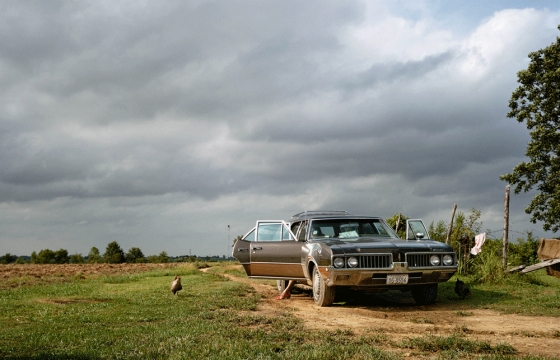













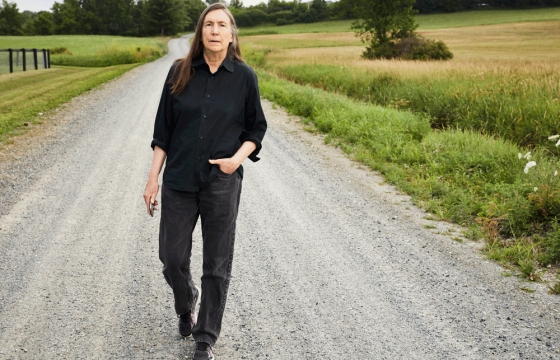

/cdn.vox-cdn.com/uploads/chorus_asset/file/23615934/Screen_Shot_2022_06_02_at_10.19.56_AM.png)
/cdn.vox-cdn.com/uploads/chorus_asset/file/23615936/Screen_Shot_2022_06_02_at_10.27.18_AM.png)
/cdn.vox-cdn.com/uploads/chorus_asset/file/23615938/Screen_Shot_2022_06_03_at_1.03.17_PM.png)















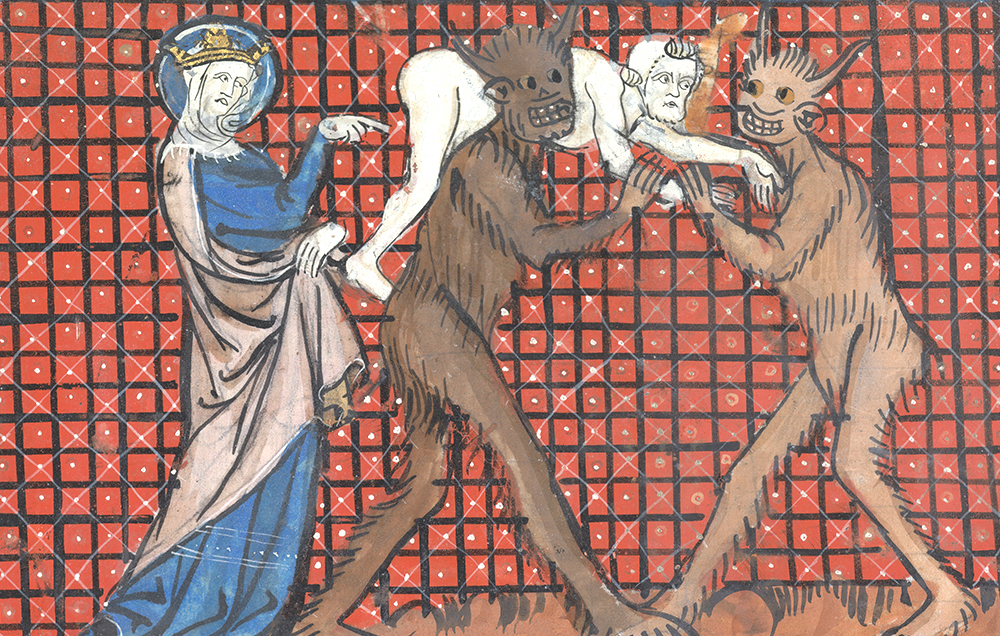



/cdn.vox-cdn.com/uploads/chorus_asset/file/23357639/AccentMatrix_Hulu_Netflix_AppleTV_Disney_MGM.jpg)
/cdn.vox-cdn.com/uploads/chorus_asset/file/23357638/Seamless_Accurate.jpg)
/cdn.vox-cdn.com/uploads/chorus_asset/file/23357636/daniel_blood.jpeg)
/cdn.vox-cdn.com/uploads/chorus_asset/file/23357635/Distracting_Accurate.jpg)
/cdn.vox-cdn.com/uploads/chorus_asset/file/23357632/Screen_Shot_2021_10_28_at_12.05.44_PM.png)
/cdn.vox-cdn.com/uploads/chorus_asset/file/23357631/Seamless_Artistic.jpg)
/cdn.vox-cdn.com/uploads/chorus_asset/file/23357628/Distracting_Artistic.jpg)




